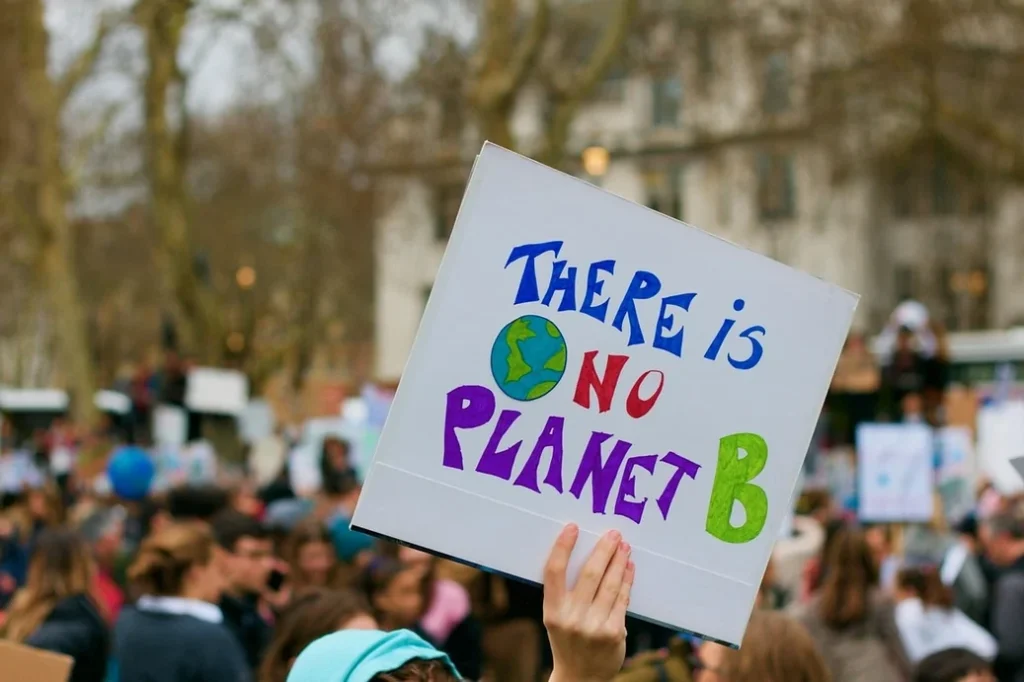
Climate Challenges 2025 bring new questions and difficult decisions related to the ongoing climate crisis. The world faces the urgent need to confront the consequences of long-standing environmental issues, political shifts, and technological innovations. As extreme weather events intensify and global policies evolve, addressing these challenges has never been more critical. The path we choose in 2025 will shape not only the present but also the future of generations to come. What key factors will define this year, and how can we navigate the most pressing climate challenges to build a more sustainable planet?
Political Pressure in Addressing the Climate Crisis

In 2025, global efforts to combat climate change face significant political challenges. The inauguration of Donald Trump as President of the United States has brought substantial shifts in U.S. climate policy. Trump announced the withdrawal of the U.S. from the Paris Agreement, weakening international cooperation in reducing greenhouse gas emissions (apnews.com). Additionally, his administration approved new measures to accelerate fossil fuel extraction, signaling a departure from renewable energy investments (npr.org). These actions have raised concerns among environmental experts and international partners. With the U.S. being one of the largest greenhouse gas emitters, there is a real threat to global climate efforts.
Pressure from major corporations and national governments to ease environmental regulations is also visible in the European Union. Companies like ExxonMobil criticize European rules for hindering investments, particularly in green technologies. Meanwhile, some member states are pushing for more relaxed regulations to enhance economic competitiveness. European Commission President Ursula von der Leyen, who committed to simplifying sustainability reporting, now faces calls for further deregulation to maintain the EU’s competitive edge. This shift signals a move away from the EU’s previously strong climate commitments (Financial Times).
Moreover, Trump’s recent decision to suspend climate-focused funding in the U.S. is seen by some European leaders as an opportunity to attract these investments back. The European Union is preparing a new industrial plan called the “Clean Industrial Deal,” aimed at streamlining regulations and promoting decarbonization (Reuters).
These political pressures and decisions in 2025 could significantly influence the direction of global climate efforts, making it crucial to strike a balance between economic interests and environmental sustainability.
Persistent Dependence on Fossil Fuels

Despite global decarbonization efforts, the world remains heavily reliant on fossil fuels in 2025. According to the International Energy Agency (IEA), fossil fuels still account for approximately 80% of global energy consumption (IEA). This continued dependency complicates efforts to meet the Paris Agreement targets and heightens the risk of unsustainable global temperature increases. Despite investments in renewable energy and technological innovations, the transition to clean energy is proving insufficient (weforum.org, EIA). Additionally, some countries have increased coal and oil extraction in response to the energy crisis, further deepening reliance on fossil fuels. For example, Kazakhstan recently achieved record daily oil production, underscoring a continued focus on fossil resources (Reuters).
This trend highlights the need for stronger political measures and investments in sustainable energy solutions to ensure energy security while reducing greenhouse gas emissions. In 2025, several key events are expected to impact global fossil fuel dependence. For instance, the EU plans to implement stricter emissions standards for maritime transport, which could reduce demand for traditional fuels and promote cleaner alternatives (climate.ec.europa.eu). Additionally, countries like Thailand plan to introduce new carbon taxes in 2025 to incentivize a shift to renewable energy (reccessary.com).
Despite these initiatives, concerns about insufficient progress persist. Strengthening international commitments and taking concrete actions to reduce fossil fuel dependence are essential for promoting sustainable energy solutions.
Updating Nationally Determined Contributions in 2025

In 2025, countries will once again update their Nationally Determined Contributions (NDCs) under the Paris Agreement. The agreement requires signatory states to submit new or updated NDCs every five years to gradually increase ambitions for reducing greenhouse gas emissions. This cyclical process aims to ensure that global efforts align with the goal of limiting global temperature rise to 1.5°C above pre-industrial levels (UN).
The 2025 NDC updates will be informed by the first Global Stocktake, which provides a comprehensive overview of progress toward the Paris Agreement goals. This assessment identified areas where efforts need to be intensified and will guide countries in setting more ambitious targets in their NDCs (UNFCCC).
However, despite mechanisms for raising ambition, current national commitments remain insufficient to meet the Paris Agreement goals. According to the World Resources Institute, current NDCs are inadequate and could lead to a projected temperature rise of 2.5–2.9°C by the end of the century, far exceeding the 1.5°C target (World Resources Institute).
It is therefore essential for countries in 2025 to submit more ambitious NDCs, reflecting the latest scientific knowledge and technological advancements. Increasing NDC ambitions is key to achieving the Paris Agreement goals and preventing the worst impacts of climate change.
The Role of El Niño and La Niña in 2025

In 2025, climate phenomena like El Niño and La Niña remain significant factors influencing the global climate. According to a January 2025 NOAA report, current La Niña conditions are expected to persist through February to April, transitioning to neutral conditions between March and May (Climate.gov). This weak and short-lived La Niña may affect global weather patterns, including rainfall and temperatures, while slightly moderating global average temperatures. Nevertheless, the overall warming trend driven by climate change continues.
Studies suggest that climate change could intensify and increase the frequency of extreme El Niño and La Niña events, leading to more pronounced impacts in the future (mongabay.com). For instance, La Niña often causes severe droughts in Australia and Indonesia, while El Niño leads to intense flooding in South America. These extremes pose significant risks to agriculture, water supplies, and the livelihoods of millions.
While 2025 is not expected to be warmer than 2024, the influence of these phenomena, combined with ongoing global warming, ensures that 2025 will still rank among the hottest years on record (Climate.gov). These findings underscore the need for monitoring and preparing for the impacts of these events, particularly in regions most vulnerable to their extremes.
Perspective Technologies to Tackle the Climate Crisis

The year 2025 marks a pivotal moment for climate innovations, as many technologies that were once theoretical concepts are now transitioning into practical applications. These solutions, having reached advanced development stages, offer real hope in the fight against climate change. Their deployment this year could significantly influence our path to a sustainable future.
One emerging technology gaining momentum is Direct Air Capture (DAC), which directly removes carbon dioxide from the atmosphere. In 2025, construction will begin on one of the world’s largest DAC facilities in Louisiana, USA, supported by a $50 million investment from the U.S. Department of Energy. This facility is projected to capture thousands of tons of CO₂ annually, with the collected gas safely stored underground (WSJ, wired.com).
Another promising innovation set to advance in 2025 is green hydrogen. Produced through the electrolysis of water using renewable energy such as solar and wind, green hydrogen can decarbonize sectors like steelmaking and chemical production, which are difficult to electrify. Large-scale green hydrogen plants in Australia, Germany, and the United Arab Emirates are expected to begin operations this year, supplying clean energy to industrial sectors (offshore-energy.biz).
Small modular reactors (SMRs) are also on the horizon as a solution for providing stable, carbon-free energy. These compact nuclear reactors are designed to be safer and faster to deploy than traditional nuclear plants. In Canada, construction will start on the first SMR at the Darlington site in Ontario, aiming for completion by 2028 (power-eng.com). Meanwhile, Finland will begin building a pilot SMR, the LDR-50, which will demonstrate the technology’s safety and efficiency, particularly for district heating (world-nuclear-news.org).
While 2025 presents numerous challenges, it also offers opportunities. The development and implementation of these technologies highlight a continued commitment to addressing climate change and provide tangible results. These innovations give us reason for cautious optimism: the journey toward a sustainable future is not just a vision but an achievable reality.
Final Thoughts

The year 2025 marks another step in the long journey to addressing the climate crisis. The challenges we face are immense—from political decisions to groundbreaking technological moments. Yet, these challenges also present opportunities—opportunities to innovate, collaborate, and seek solutions that bring about positive change.
It is up to each of us to contribute in our own way—whether by changing daily habits, supporting sustainable solutions, or spreading awareness about what truly matters.
If you’re passionate about climate challenges, follow us at EcoCompass. Together, we can navigate the path to a better, more sustainable future.
